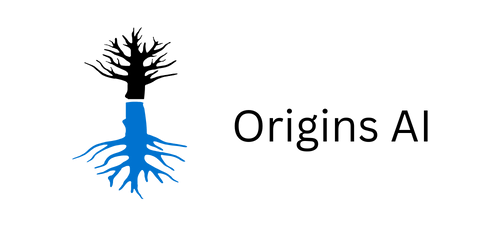The world of Artificial Intelligence is rapidly evolving. AI is no longer confined to academic research or niche tech companies. It’s permeating every industry, from healthcare and agriculture to manufacturing and beyond. This democratization is largely thanks to large language models (LLMs) and conversational interfaces, making AI accessible to a broader audience. But a significant challenge remains: bridging the gap between impressive demos and robust production applications. This article explores the nuances of productionizing AI, drawing insights from real-world experiences and industry trends.
The AI Production Paradox: Easy to Demo, Hard to Deploy
Building a compelling AI demo is surprisingly easy. You can create astonishing results with just a few lines of code, leveraging pre-trained models and readily available APIs. This ease, however, masks a difficult reality: productionizing AI is complex. Many AI projects, even those backed by significant resources, stumble on the path to production. Why? Because AI development is inherently different from traditional software development.
Traditional software development follows a linear progression. You add code, features, and functionality, generally leading to incremental improvements. AI development, however, is experimental and iterative, resembling a research process more than a build process. It involves constant experimentation, tweaking, and testing. The non-deterministic nature of AI, especially with LLMs, means you don’t always know what output to expect. Traditional software testing methods like CI/CD, which rely on predictable outcomes, don’t translate effectively to this experimental, probabilistic environment.
Why CEOs Get Fooled by AI Demos
The ease of creating impressive AI demos often leads to unrealistic expectations. CEOs, eager to capitalize on the AI hype, may push for premature deployment of applications that are not ready for prime time. This can result in embarrassing public failures and erode trust in AI. The key takeaway here is that a good demo is not a finished product. It’s a starting point, a proof of concept that requires significant refinement before it can handle the complexities of real-world usage.
The IP of AI: It’s Not the Code, It’s the Learning
In software development, the code is the intellectual property (IP). But in AI, the real IP is the accumulated learning: the experiments, the failed attempts, the successful prompts, the refined workflows, and the carefully curated datasets. This learning is often locked inside the minds of individual engineers. If they leave, the IP walks out the door with them. This makes knowledge management and collaboration absolutely critical for AI teams.
To retain this valuable IP, reproducibility is paramount. You must be able to recreate experiments and retrace the steps that led to breakthroughs. This requires meticulous tracking of every experiment, parameter, and result. Manual tracking is prone to errors and omissions. Automated, passive tracking, using tools designed specifically for AI development, is essential for true reproducibility. This not only protects IP but also fosters collaboration and accelerates iteration, ultimately reducing time to market.
Productionizing Generative AI: A Real-World Example – Building a Personalized Alexa
Consider a practical example: building a personalized voice assistant similar to Alexa. Imagine a child regularly asking Alexa to play their favorite song, “Baby Shark.” Surprisingly, Alexa might not recognize this preference due to data privacy limitations. This gap presents an opportunity for a personalized AI solution.
Using open-source tools like Llama 2 and Whisper, combined with custom-written skills, one can build a personalized voice assistant. The architecture is relatively straightforward:
- Speech Input: The user asks a question or makes a request.
- Transcription: Whisper transcribes the audio into text.
- LLM Processing: An LLM processes the text and translates it into a function call.
- Skill Execution: The corresponding skill executes the function (e.g., playing music, fetching weather information) and returns the result.
- Output: The assistant delivers the response.
The Iterative Journey to Production: From Zero to 98% Accuracy
However, this seemingly simple architecture presents several challenges. Latency is crucial. The entire process, from transcription to response, must occur quickly (within a few hundred milliseconds) for a smooth user experience. Initial attempts with default prompts and off-the-shelf models might yield poor accuracy. This is where the iterative process of AI development comes into play. The journey to a working prototype involves several key steps:
- Prompt Engineering: This involves carefully crafting prompts to guide the LLM toward the desired output. It’s often an iterative process of trial and error, requiring creativity and a deep understanding of how LLMs interpret language.
- Model Selection: Experimenting with different LLMs, including open-source models like Llama 2 and Mistral, and commercial models, is crucial to find the best performance for a given task. This often involves balancing cost, performance, and ease of deployment.
- Error Analysis: Carefully examining the errors the model makes helps identify patterns and areas for improvement. This may involve looking at specific examples where the model failed and understanding why it failed.
- Fine-tuning: Training the model on a custom dataset, even a relatively small one, can significantly improve accuracy and tailor the model to specific needs. Techniques like LoRA (Low-Rank Adaptation) make fine-tuning large models more accessible.
- Data Augmentation: If creating a custom dataset is too time-consuming, data augmentation techniques can help expand the training data and improve model robustness.
This iterative process, moving from an initial accuracy of 0% to a final accuracy of 98% in the example, highlights the importance of persistence and systematic experimentation. Switching models, like moving from Llama 2 to Mistral, can yield significant gains without any code changes. Fine-tuning provides the final boost in accuracy, getting the model to a production-ready state.
A Step-by-Step Methodology for Productionizing LLM Applications
Building upon the previous sections, let’s outline a concrete methodology for taking your LLM application from demo to production:
1. Define Clear Objectives and Metrics:
- Identify the Problem: What problem are you trying to solve with your LLM application? Be specific and concrete.
- Define Success: What does success look like? Quantify your goals with measurable metrics. Examples include accuracy, latency, user engagement, or cost reduction. Tie these metrics to business value whenever possible.
2. Start with a Lightweight Prototype:
- Rapid Prototyping: Build a minimal viable product (MVP) quickly using existing tools and libraries. Focus on demonstrating the core functionality without getting bogged down in details.
- Initial Evaluation: Test your MVP against your defined metrics. This initial evaluation will provide a baseline for future improvements.
3. Iterative Development and Refinement:
- Prompt Engineering: Experiment with different prompts to optimize the LLM’s output. Use techniques like few-shot learning, chain-of-thought prompting, or prompt templates. Track your experiments meticulously.
- Model Selection and Fine-tuning: Evaluate different LLMs and fine-tune the chosen model on a custom dataset relevant to your application. Consider techniques like LoRA to reduce the computational cost of fine-tuning.
- Data Augmentation: If gathering a large, labeled dataset is challenging, explore data augmentation techniques to expand your training data and improve model robustness.
- Continuous Evaluation: Regularly evaluate your model against your defined metrics after each iteration. This will help you track progress and identify areas for improvement.
4. Building a Robust Evaluation Framework:
- Multiple Test Sets: Create diverse test sets that cover various scenarios and edge cases. Include unit tests for individual components, integration tests for the entire system, and a held-out test set for final evaluation.
- Automated Evaluation: Automate the evaluation process to ensure consistency and reduce manual effort. Integrate your evaluation framework into your CI/CD pipeline.
- Human Evaluation: Incorporate human evaluation where appropriate, especially for subjective metrics like creativity or fluency. Use techniques like A/B testing to compare different model versions.
5. Deployment and Monitoring:
- Choose a Deployment Strategy: Select a deployment strategy that aligns with your needs and resources. Options include serverless functions, containerized deployments, or dedicated hardware.
- Monitoring and Logging: Implement robust monitoring and logging to track performance, identify errors, and ensure the application’s health in production. Set up alerts for critical metrics.
- Continuous Improvement: Continuously monitor user feedback and iterate on your application based on real-world usage patterns. AI development is an ongoing process, and continuous improvement is essential for long-term success.
Key Lessons for LLM Production
Several key takeaways emerge from this experience:
- Robust Evaluation is Crucial: Testing “by vibes” is insufficient. A comprehensive evaluation framework, encompassing various metrics (accuracy, latency, robustness) and test sets (unit tests, integration tests, real-world data), is essential for measuring progress and making informed decisions. Regularly evaluating the model against these metrics allows for objective comparisons and informed decisions about model selection, prompt engineering, and fine-tuning strategies.
- Start with a Lightweight Prototype: Don’t get bogged down in perfecting the first iteration. Build a simple prototype and get it into the hands of users (even if it’s just internal users) early. This allows for rapid feedback and iteration.
- Incorporate User Feedback: Continuously gather and incorporate feedback to refine the model and improve its performance. User feedback provides valuable insights into real-world usage patterns and helps identify edge cases and areas where the model falls short.
- Iterate, Iterate, Iterate: AI development is an iterative process. Embrace experimentation, track your progress meticulously, and continuously refine your approach. The journey from a basic demo to a production-ready application is paved with experiments, both successful and failed.
The Future of AI Development: Empowering Builders
The democratization of AI empowers a new generation of developers to build innovative applications. Tools and platforms that facilitate experimentation, tracking, and collaboration are essential for navigating the complexities of AI development and bridging the gap between demo and production. By embracing these principles and learning from real-world examples, we can unlock the full potential of AI and transform industries across the board.

